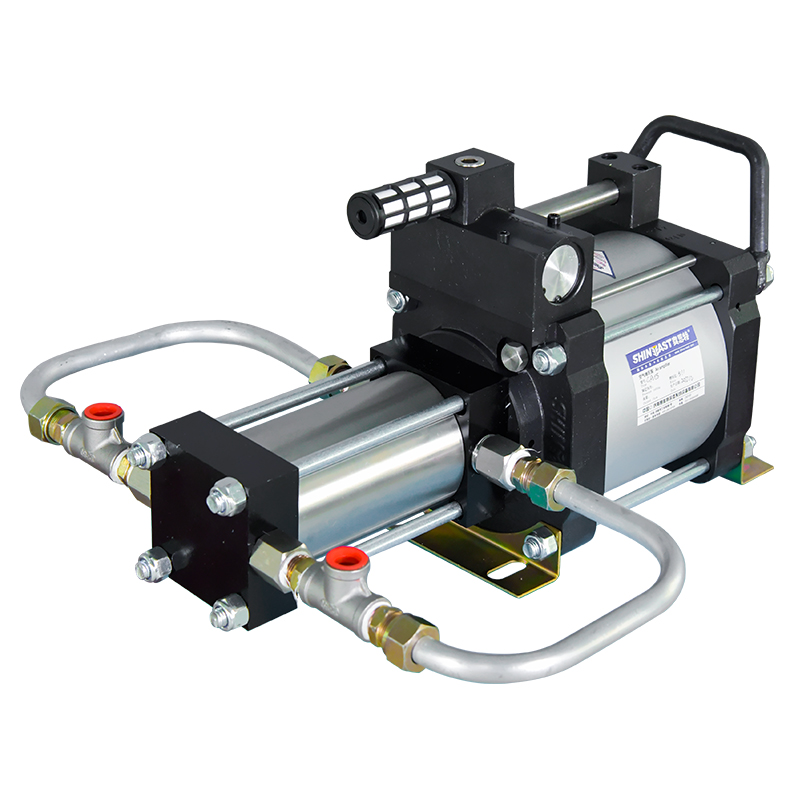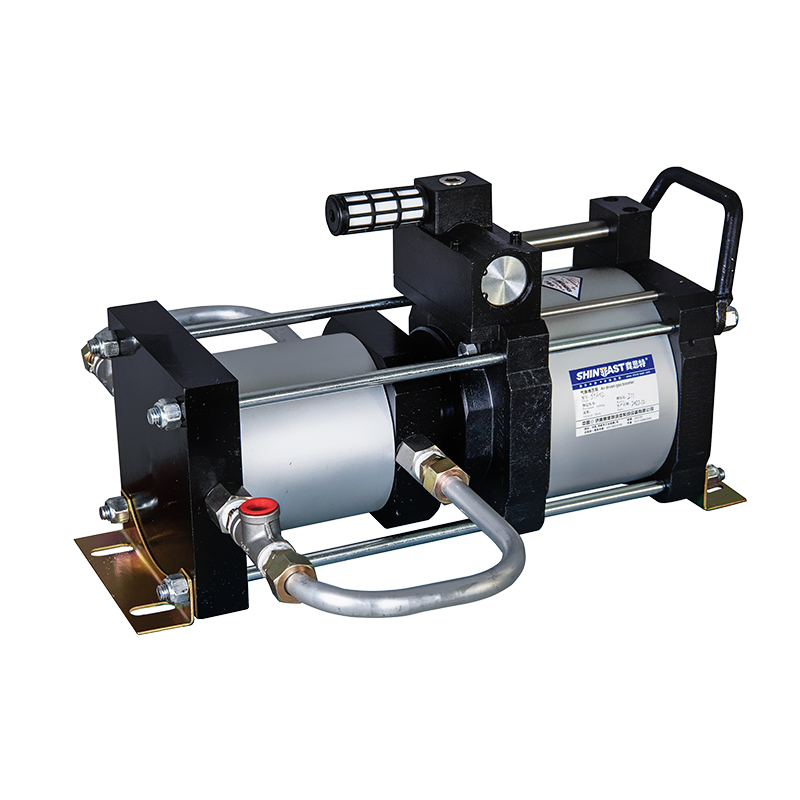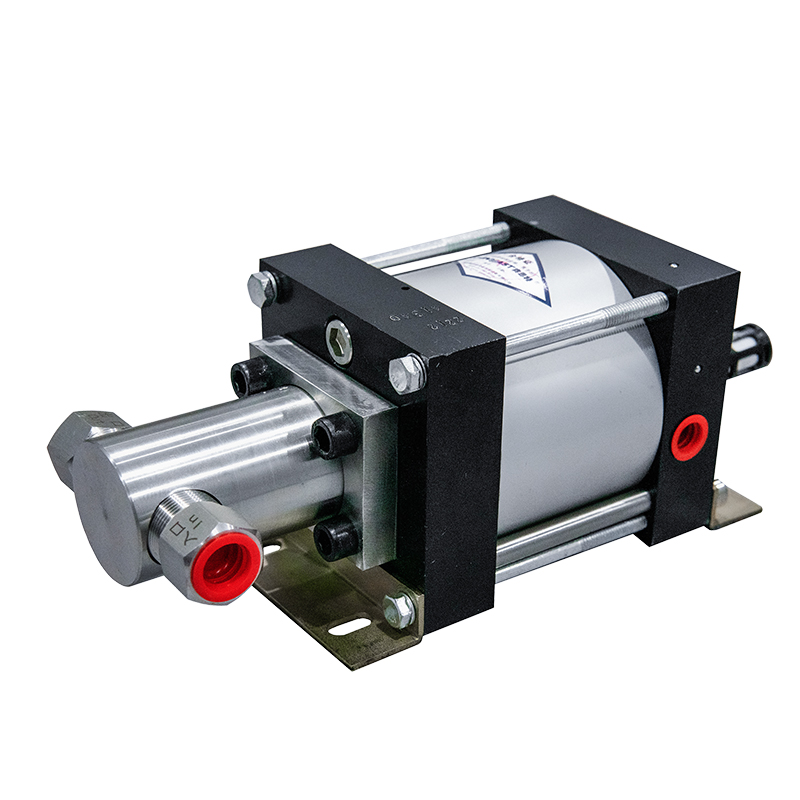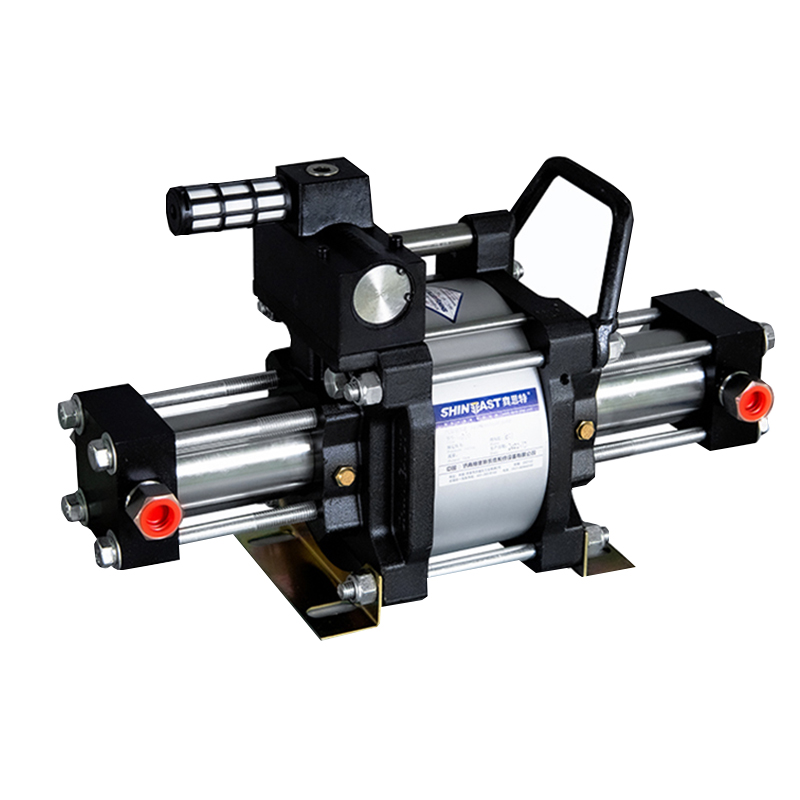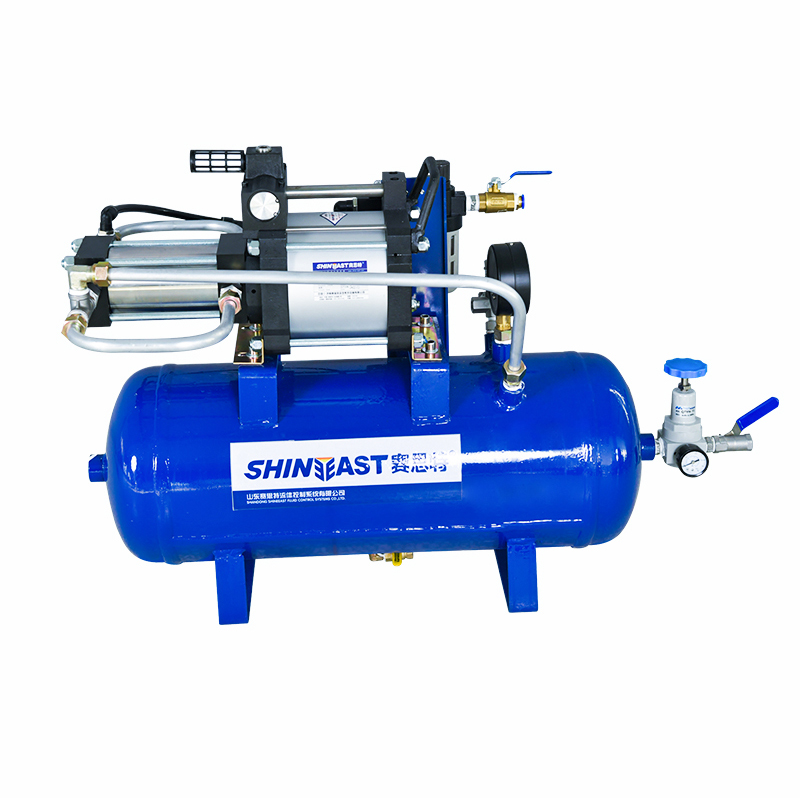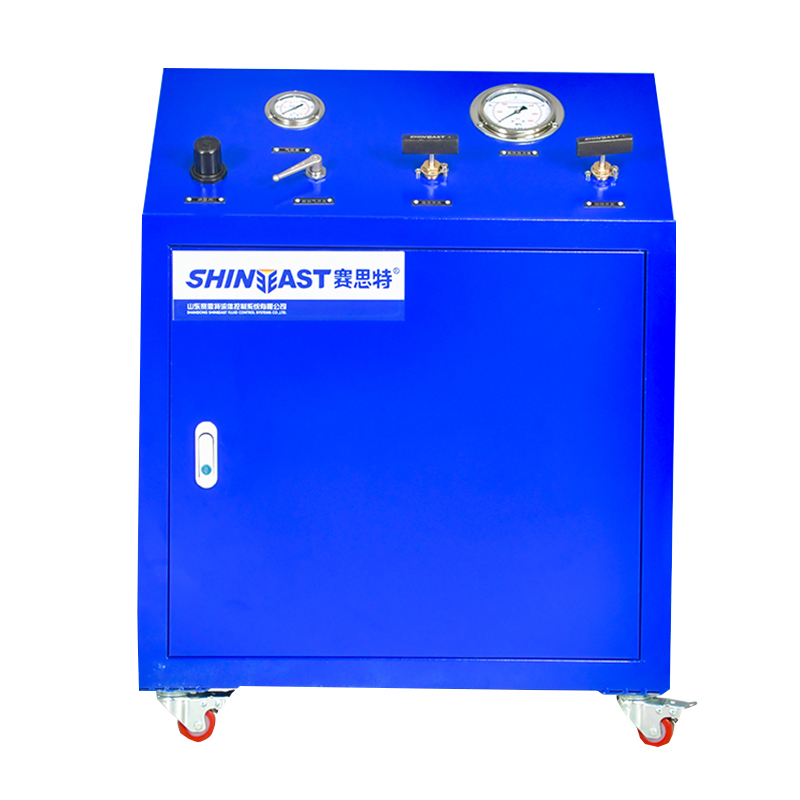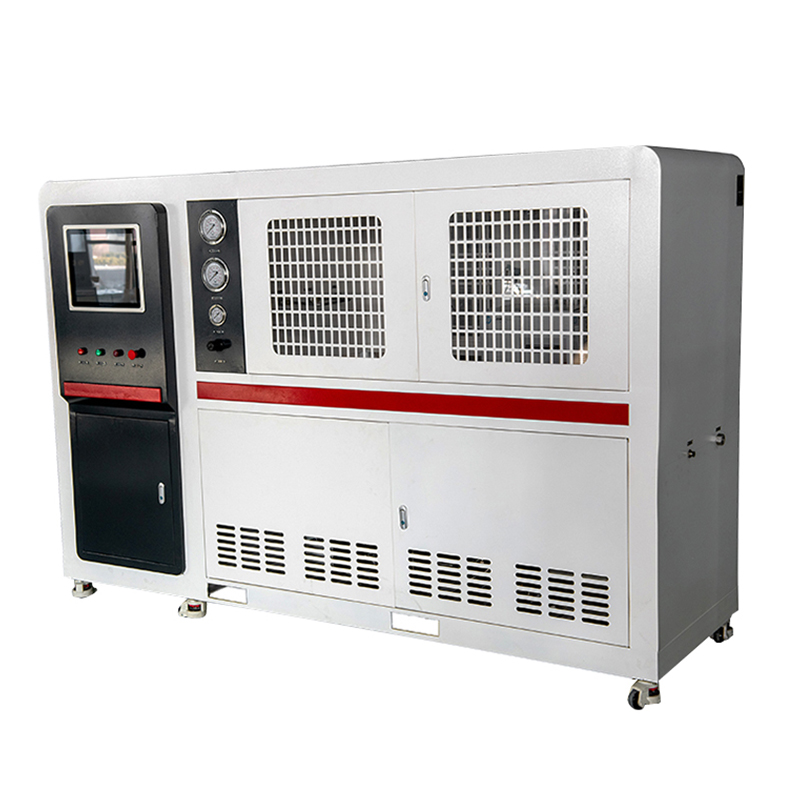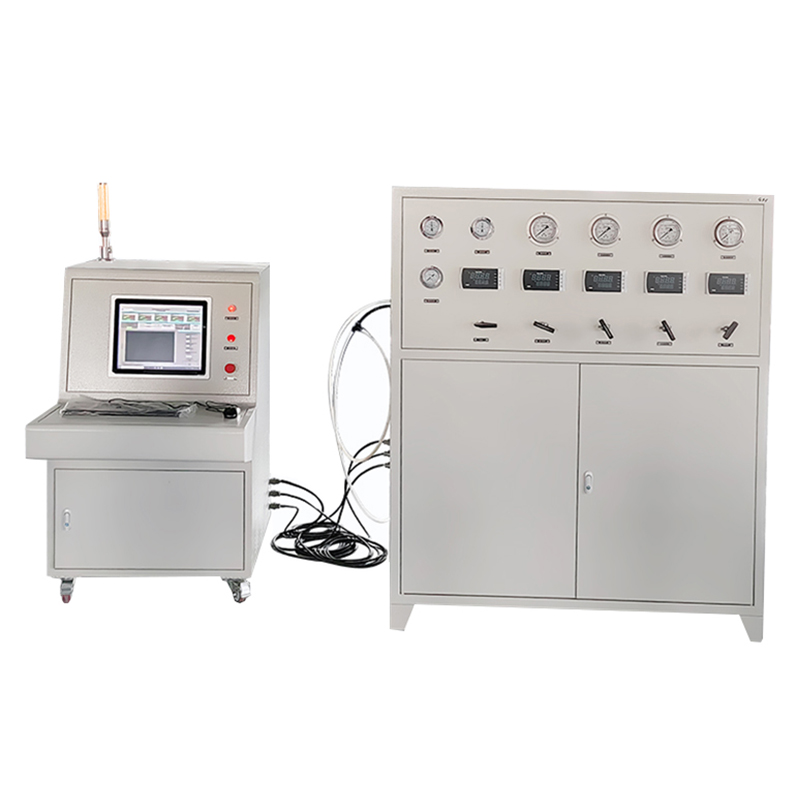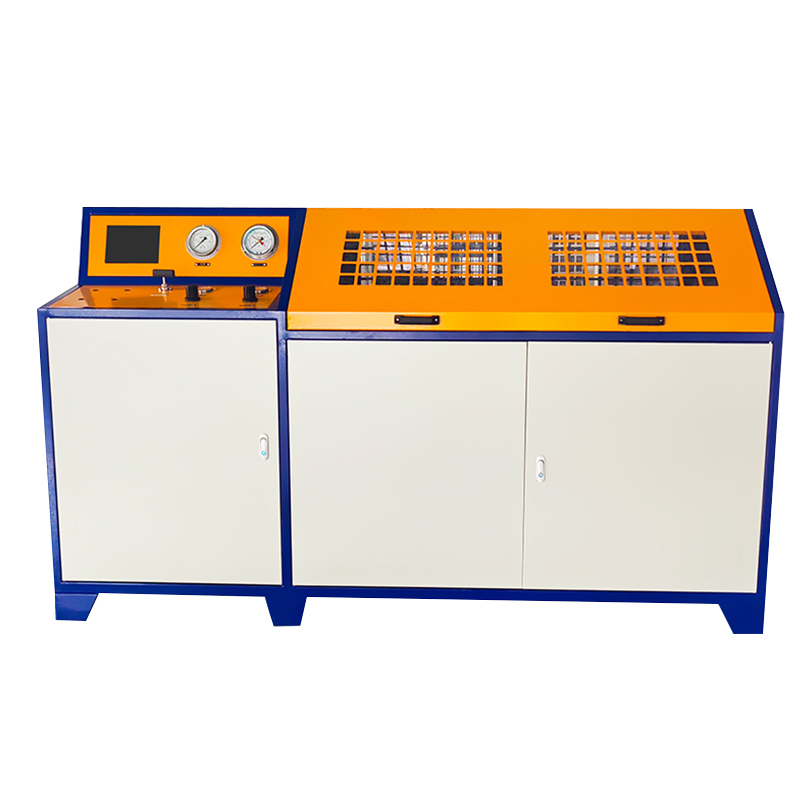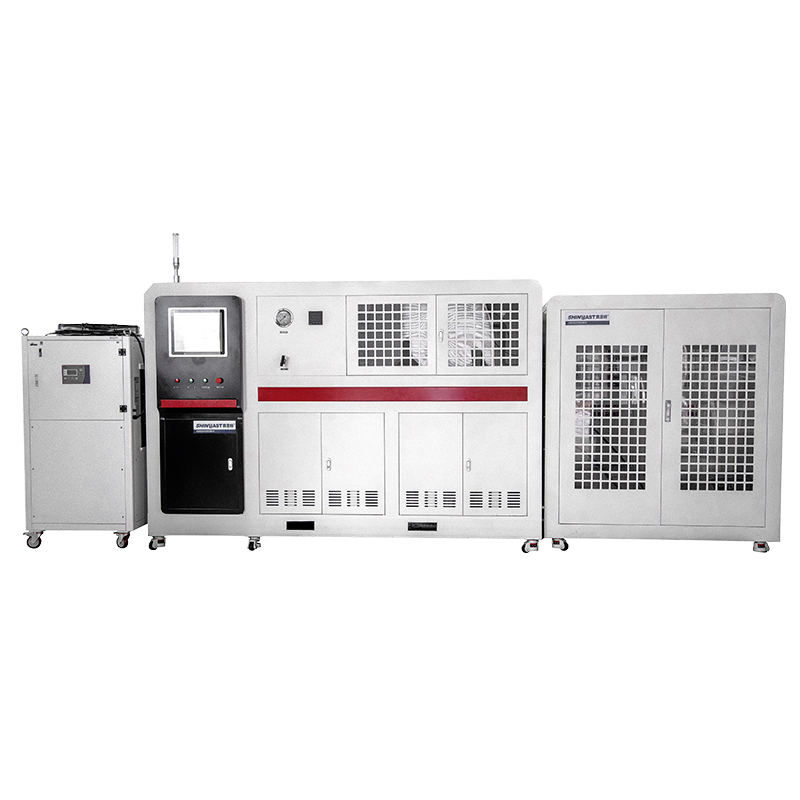What should be paid attention to when cleaning the gas pressurization system
Shineeast is located in the beautiful spring city of Jinan, Shandong Province. Its predecessor is Jinan Saisite fluid system equipment Co., Ltd. the company was founded in 2001. After more than 20 years of operation and development, the company has become a navigator in the field of fluid system and pressure detection in China and a pioneer in the fluid system industry.
Shineeast is a professional manufacturer specializing in R&D and production of gas pressurization, liquid pressurization and various related non-standard fluid control systems. The company's core products are all kinds of gas booster pump equipment. When using the sester pneumatic booster pump, we should pay attention to the following key issues to ensure its long-term stable operation and safety.
1. installation location and environment
Installation position: ensure that the pneumatic booster pump is installed in a well ventilated, dry and corrosion free environment. Avoid direct contact between the pump body and the ground to reduce the impact of vibration.
Temperature requirements: the ambient temperature should be within the working temperature range of the pump, generally -20 ° C to 60 ° C, to avoid the impact of too high or too low temperature on the performance of the pneumatic booster pump.
2. air source and air quality
Air quality: the air in the air supply system must be clean and free of moisture and oil. Impurities in the air may cause wear to the components inside the pump and shorten the service life of the pump. It is recommended to use air filter and oil-water separator to ensure the quality of air source.
Air supply pressure: ensure that the air supply pressure meets the working requirements of the pump. Generally, the air supply pressure should be in the range of 3-8 bar. Too high or too low air pressure will affect the performance of the pump.
3. connecting pipes and fittings
Pipe size: the size of the pipe connecting the pneumatic booster pump must match the air inlet and exhaust port of the pump to avoid insufficient air flow caused by too small pipe, which will affect the pressurization effect of the pump.
Tightness: ensure that there is no leakage at all connection points and pipe joints, so as to avoid the loss of air source and affect the efficiency of the pump.
Vibration reduction measures: the pneumatic booster pump may produce certain vibration during operation. During installation, damping pads or mounting brackets can be used to reduce the impact of vibration on the equipment and the surrounding environment.
4. operating pressure and load
Avoid overload: do not exceed the maximum working pressure or load range of the pump. Excessive working pressure may cause damage to the pump.
Pressure regulation: be careful when adjusting the outlet pressure of the pump to ensure that the pressure is within the appropriate range and avoid adverse effects of overpressure or low-pressure operation on the long-term use of the pump.
5. maintenance
Regular inspection: check the operation of the pump regularly, such as whether the gas source is stable, whether the pump body has abnormal noise, whether there is gas leakage, etc. If necessary, clean and replace vulnerable parts, such as sealing rings, pistons, etc.
Lubrication: Although the operation of the pneumatic booster pump does not rely on liquid lubrication, it is still necessary to regularly check the lubricating parts, especially the friction parts, such as the bearing part of the pneumatic motor.
Air filtration: regularly replace the filter element of the air source filter to keep the air clean to prevent impurities from entering the pump body.
6. safe operation
Safety protection: during installation, commissioning and maintenance, ensure that the air source of the pump body has been turned off and the power has been cut off to prevent accidental startup.
Warning signs: install warning signs to remind operators of the working state, maximum working pressure and maintenance precautions of the pump.
7. troubleshooting
Common faults: if the pneumatic booster pump has difficulties in starting, insufficient pressure or abnormal noise, you can check whether the air source is normal, whether the pipeline is blocked, and whether the pneumatic valve is damaged. If necessary, contact after-sales service for repair.
Shineeast is a professional manufacturer specializing in R&D and production of gas pressurization, liquid pressurization and various related non-standard fluid control systems. The company's core products are all kinds of gas booster pump equipment. When using the sester pneumatic booster pump, we should pay attention to the following key issues to ensure its long-term stable operation and safety.
1. installation location and environment
Installation position: ensure that the pneumatic booster pump is installed in a well ventilated, dry and corrosion free environment. Avoid direct contact between the pump body and the ground to reduce the impact of vibration.
Temperature requirements: the ambient temperature should be within the working temperature range of the pump, generally -20 ° C to 60 ° C, to avoid the impact of too high or too low temperature on the performance of the pneumatic booster pump.
2. air source and air quality
Air quality: the air in the air supply system must be clean and free of moisture and oil. Impurities in the air may cause wear to the components inside the pump and shorten the service life of the pump. It is recommended to use air filter and oil-water separator to ensure the quality of air source.
Air supply pressure: ensure that the air supply pressure meets the working requirements of the pump. Generally, the air supply pressure should be in the range of 3-8 bar. Too high or too low air pressure will affect the performance of the pump.
3. connecting pipes and fittings
Pipe size: the size of the pipe connecting the pneumatic booster pump must match the air inlet and exhaust port of the pump to avoid insufficient air flow caused by too small pipe, which will affect the pressurization effect of the pump.
Tightness: ensure that there is no leakage at all connection points and pipe joints, so as to avoid the loss of air source and affect the efficiency of the pump.
Vibration reduction measures: the pneumatic booster pump may produce certain vibration during operation. During installation, damping pads or mounting brackets can be used to reduce the impact of vibration on the equipment and the surrounding environment.
4. operating pressure and load
Avoid overload: do not exceed the maximum working pressure or load range of the pump. Excessive working pressure may cause damage to the pump.
Pressure regulation: be careful when adjusting the outlet pressure of the pump to ensure that the pressure is within the appropriate range and avoid adverse effects of overpressure or low-pressure operation on the long-term use of the pump.
5. maintenance
Regular inspection: check the operation of the pump regularly, such as whether the gas source is stable, whether the pump body has abnormal noise, whether there is gas leakage, etc. If necessary, clean and replace vulnerable parts, such as sealing rings, pistons, etc.
Lubrication: Although the operation of the pneumatic booster pump does not rely on liquid lubrication, it is still necessary to regularly check the lubricating parts, especially the friction parts, such as the bearing part of the pneumatic motor.
Air filtration: regularly replace the filter element of the air source filter to keep the air clean to prevent impurities from entering the pump body.
6. safe operation
Safety protection: during installation, commissioning and maintenance, ensure that the air source of the pump body has been turned off and the power has been cut off to prevent accidental startup.
Warning signs: install warning signs to remind operators of the working state, maximum working pressure and maintenance precautions of the pump.
7. troubleshooting
Common faults: if the pneumatic booster pump has difficulties in starting, insufficient pressure or abnormal noise, you can check whether the air source is normal, whether the pipeline is blocked, and whether the pneumatic valve is damaged. If necessary, contact after-sales service for repair.
CONTACT US
Please use the form below to get in touch.
If you need a reply we will get in touch as soon as possible.

